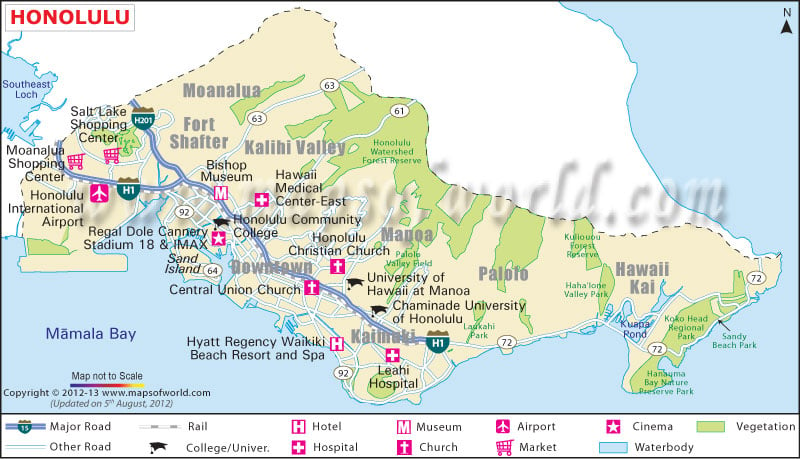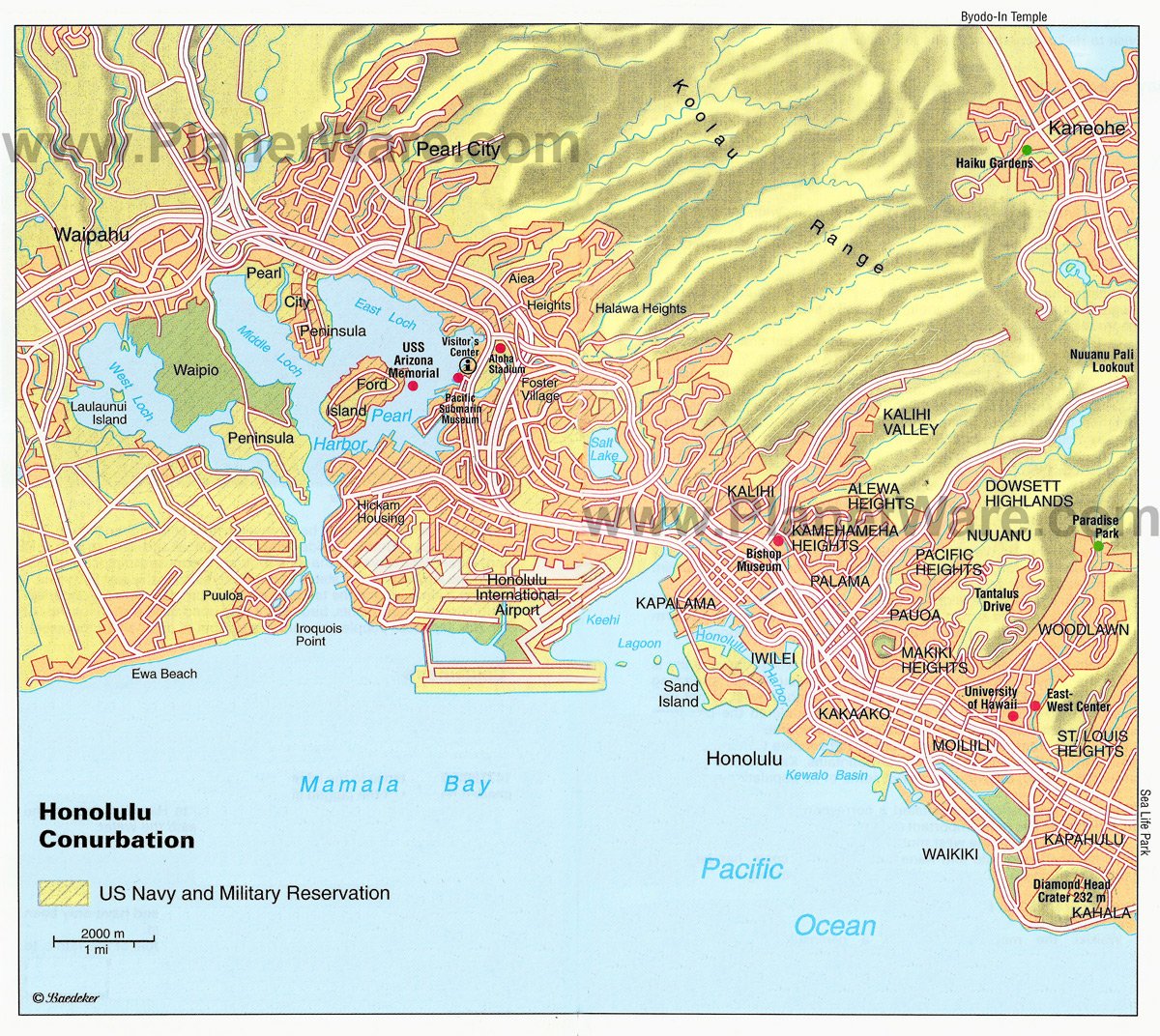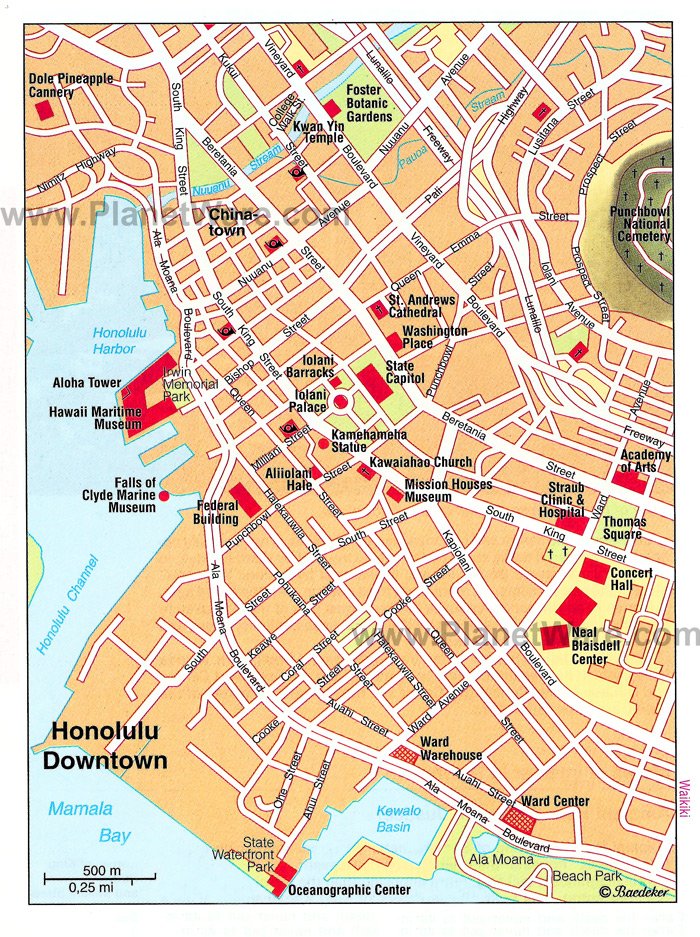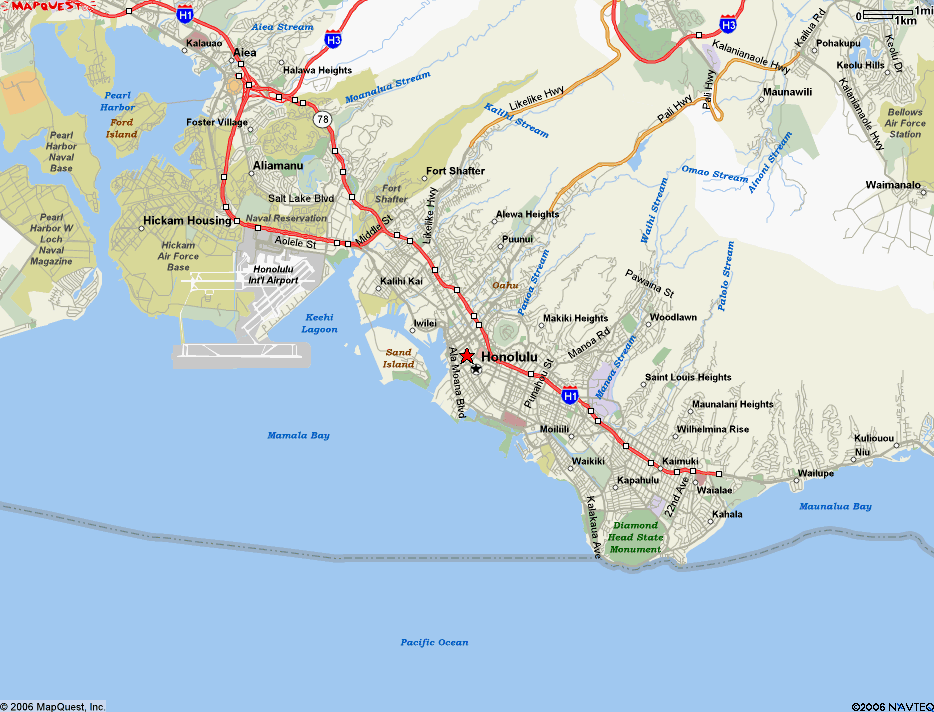 Honolulu (/ˌhɒnəˈluːluː/ or /ˌhoʊnəˈluːluː/;[5][6] Hawaiian pronunciation: [honoˈlulu]) is the state capital and the most populous city in the U.S. state of Hawaii.[a] It is the county seat of the City and County of Honolulu. Hawaii is a major tourist destination and Honolulu, situated on the island of Oahu, is the main gateway to Hawaii and a major gateway into the United States. The city is also a major hub for international business, military defense, as well as famously being host to a diverse variety of east-west and Pacific culture, cuisine, and traditions.
Honolulu (/ˌhɒnəˈluːluː/ or /ˌhoʊnəˈluːluː/;[5][6] Hawaiian pronunciation: [honoˈlulu]) is the state capital and the most populous city in the U.S. state of Hawaii.[a] It is the county seat of the City and County of Honolulu. Hawaii is a major tourist destination and Honolulu, situated on the island of Oahu, is the main gateway to Hawaii and a major gateway into the United States. The city is also a major hub for international business, military defense, as well as famously being host to a diverse variety of east-west and Pacific culture, cuisine, and traditions.Honolulu is both the westernmost and the southernmost major American city. For statistical purposes, the U.S. Census Bureau recognizes the approximate area commonly referred to as "City of Honolulu" (not to be confused with the "City and County") as a census county division (CCD).[8] Honolulu is a major financial center of the islands and of the Pacific Ocean. The population of Honolulu CCD was 390,738 at the 2010 census,[9] while the population of the consolidated city and county was 953,207.













